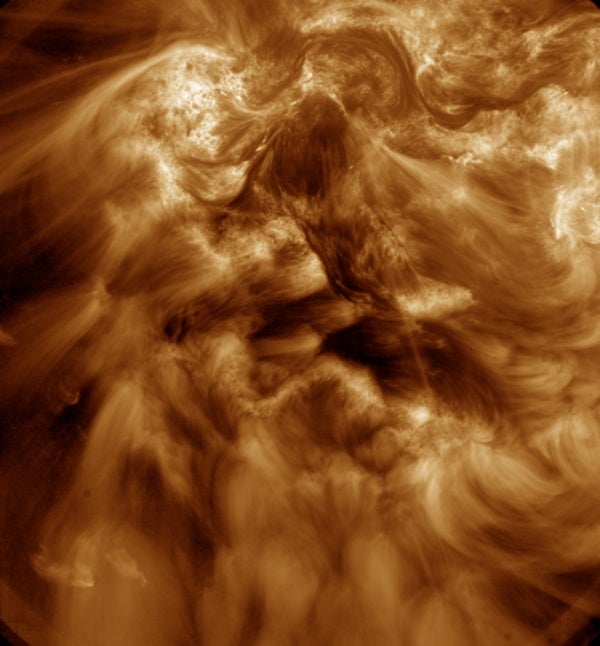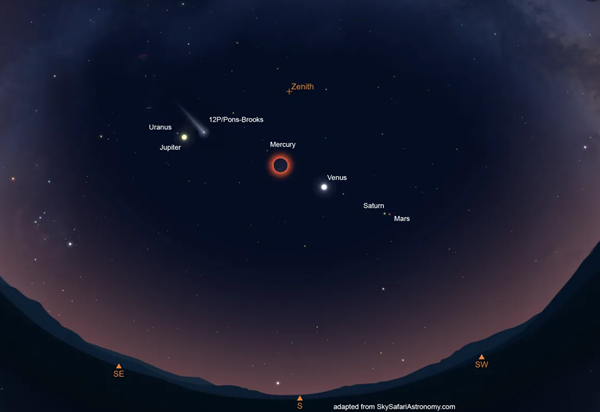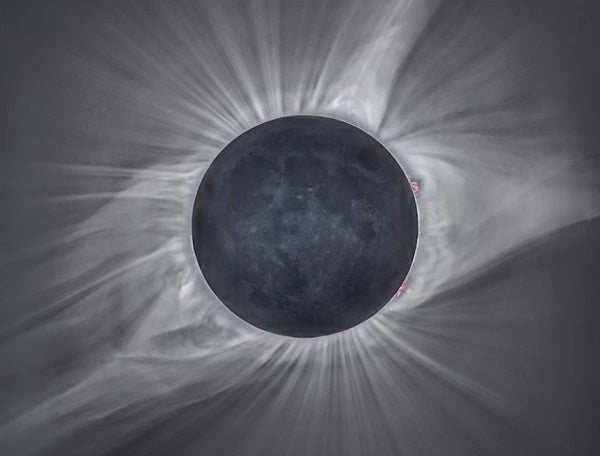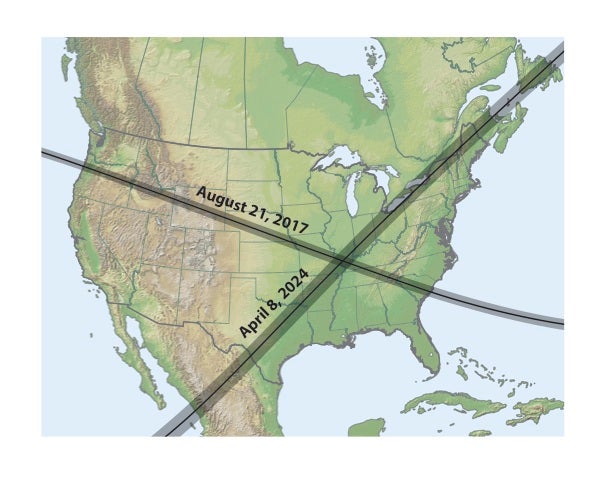The NASA-built High Resolution Coronal Imager (Hi-C) was first launched in July 2012 on a sounding rocket, operating for five minutes on its maiden flight. It observed the Sun at extreme ultraviolet wavelengths — far beyond the blue end of the visible spectrum — and in this light has produced the sharpest images of the outer atmosphere of the Sun — the corona — to date. Hi-C was designed to help scientists solve the longstanding mystery of why the tenuous corona with a typical temperature of 3.6 million degrees Fahrenheit (2 million degrees Celsius) is so much hotter than the surface of the Sun beneath, which is typically 9900° F (5500° C).
Hi-C’s camera has five times the number of pixels as the latest generation of ultra-high definition (UHD) televisions. Images from it are sharp enough to allow the fundamental structures of the corona, which are strongly shaped by magnetic fields, to be resolved. During its flight, the camera was centered on a region where the magnetic field was particularly strong and where a phenomenon known as moss is found. In the Hi-C images, the moss appeared as some of the brightest features, forming net-like (reticulated) patches of emission.
Moss forms the lower sections of the hottest structures in the corona, the upper parts of which are invisible to the Hi-C camera as they predominantly emit X-rays. But studying its behavior has allowed researchers to obtain key information on the underlying events that heat the corona. For example, there is significant evidence that the Sun’s complex magnetic field, which pervades the entire solar atmosphere and provides the framework for its beautiful structures, plays a decisive role.
With his colleague Richard Morton, James McLaughlin used the Hi-C data to measure the intrinsic properties of the moss for the first time, discovering that its individual magnetic elements are highly dynamic, shaking back and forth at speeds of up to 10,000 mph (16,000 km/h).
In the Hi-C images, a violent oscillating motion is seen, which can be interpreted in terms of swaying magnetic waves. Conceptually, these are similar to those that are seen to move along a taut string or as an up-and-down wave on a rope. The magnetic waves are of great interest as they are particularly good at transporting energy along the magnetic structures and distributing it around the atmosphere of the Sun.
“Our work shows that magnetic waves may play a key role in the heating of the corona,” said McLaughlin. “The short duration of the Hi-C data used in this pioneering study only gave us a tantalizing glimpse of the hidden secrets of the Sun. They show the need for future instruments that will allow us to truly understand these intriguing phenomena.”










